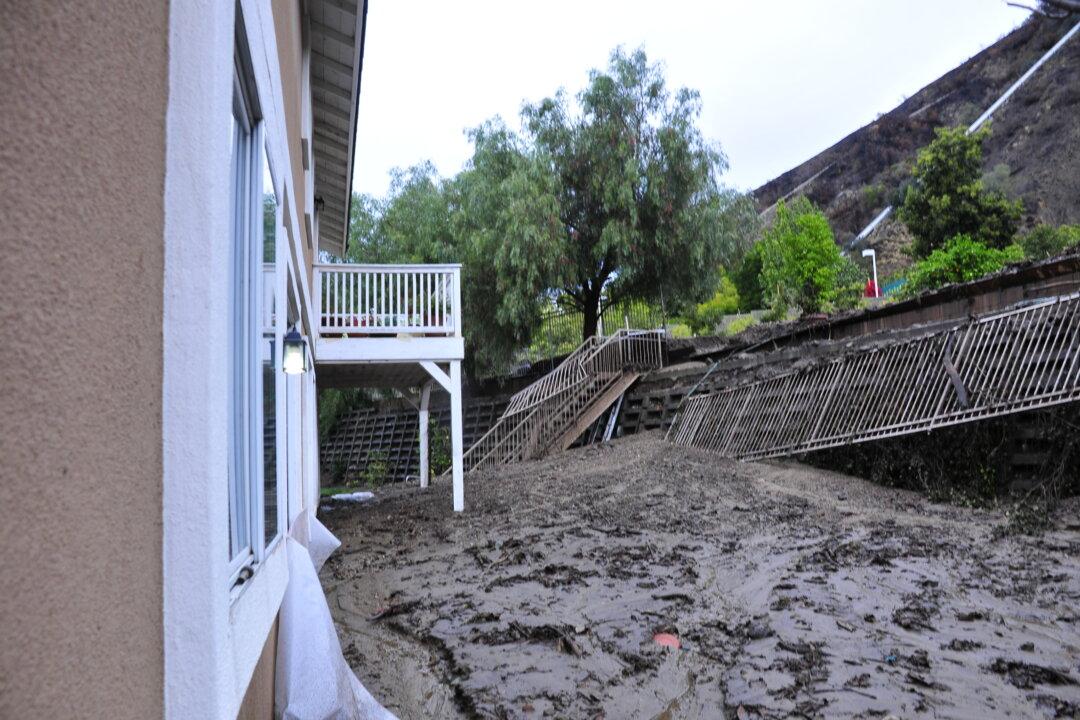GLENDORA, Calif.—The rains have come amid the worst drought in 100 years, and now mountain mudslides pound Glendora, Calif., about 20 miles east of downtown Los Angeles. January’s Colby wildfire burned much of the mountainside above Glendora, and without foliage, there is little to keep the soil on the mountainside.
This week, the city was hit by heavy winter thunderstorms dropping over an inch of rain per hour at times. Neighboring cities Azusa and Monrovia were also affected.
The city has seen mountain fires and mudslides before. It’s citizens still remember all too well the Jan. 18, 1969 mudslide. On this day, 200 homes were destroyed and dozens of people were killed when, according to estimates on History.com, about 3 million cubic feet of rock and mud pummeled the city, which has a population of about 50,000.
Glendora City held a press conference on Saturday to update citizens and the press on the current situation of mudslides and ongoing winter thunderstorms.
One of the speakers, Glendora City Manager Chris Jeffers, said “Reverse 911 land-line phone calls were made to 581 phones. Police cadets personally called some 350 residents and the local Community Services contacted 62 special needs residents.”
The city manager said mandatory evacuations went into effect Thursday at noon. “Soft” street closures (open only to residents preparing to leave their homes) were put in place. “Hard” closures took effect at 8 p.m. Thursday for evacuation.
“Two community meetings were held and community groups were organized to communicate via their cell phones with the city and neighbors,” said Jeffers, “The plan is working, and that’s the most important.” He repeated these words later in the conference, placing emphasis on the effectiveness of emergency measures.
The Epoch Times covered the mountain brush fires in this location in January 2014. The foothills have 50 percent to 95 percent grades, allowing heavy rainfall to merge into surface streams then into the steep gullies and down cliffs moving the barren soil with it.
A helicopter was continually scoping out the area for signs of ground movement, clogged flood drains, and overloads or other situations requiring city attention.
Jeffers said flooding of about 6 inches of water and mud had occurred in several areas. The local rain gauge indicated another inch of rain had fallen by 6 p.m. PST on Saturday. It was said Friday night in a press announcement that one inch of water can become one to two feet of water when moving into the various canyons and gullies below.




